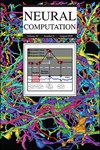Long Short-Term Memory
IF 2.1
4区 计算机科学
Q3 COMPUTER SCIENCE, ARTIFICIAL INTELLIGENCE
引用次数: 71030
Abstract
Learning to store information over extended time intervals by recurrent backpropagation takes a very long time, mostly because of insufficient, decaying error backflow. We briefly review Hochreiter's (1991) analysis of this problem, then address it by introducing a novel, efficient, gradient based method called long short-term memory (LSTM). Truncating the gradient where this does not do harm, LSTM can learn to bridge minimal time lags in excess of 1000 discrete-time steps by enforcing constant error flow through constant error carousels within special units. Multiplicative gate units learn to open and close access to the constant error flow. LSTM is local in space and time; its computational complexity per time step and weight is长短期记忆
通过反复反向传播学习在延长的时间间隔内存储信息需要很长时间,主要是因为不充分的衰减误差回流。我们简要回顾了Hochreiter(1991)对这个问题的分析,然后通过引入一种新的、高效的、基于梯度的方法来解决这个问题,称为长短期记忆(LSTM)。在不造成危害的情况下截断梯度,LSTM可以通过在特殊单元内通过恒定误差转盘强制执行恒定误差流,学会桥接超过1000个离散时间步长的最小时间滞后。乘法门单元学习打开和关闭对恒定误差流的访问。LSTM在空间和时间上是局部的;其每时间步长和权重的计算复杂度为O。我们对人工数据的实验涉及局部、分布式、实值和噪声模式表示。与实时递归学习、穿越时间的反向传播、递归级联相关、Elman网络和神经序列分块相比,LSTM可以更成功地运行,学习速度更快。LSTM还解决了以前的递归网络算法从未解决过的复杂的人工长时间滞后任务。
本文章由计算机程序翻译,如有差异,请以英文原文为准。
求助全文
约1分钟内获得全文
求助全文
来源期刊

Neural Computation
工程技术-计算机:人工智能
CiteScore
6.30
自引率
3.40%
发文量
83
审稿时长
3.0 months
期刊介绍:
Neural Computation is uniquely positioned at the crossroads between neuroscience and TMCS and welcomes the submission of original papers from all areas of TMCS, including: Advanced experimental design; Analysis of chemical sensor data; Connectomic reconstructions; Analysis of multielectrode and optical recordings; Genetic data for cell identity; Analysis of behavioral data; Multiscale models; Analysis of molecular mechanisms; Neuroinformatics; Analysis of brain imaging data; Neuromorphic engineering; Principles of neural coding, computation, circuit dynamics, and plasticity; Theories of brain function.
 求助内容:
求助内容: 应助结果提醒方式:
应助结果提醒方式:


